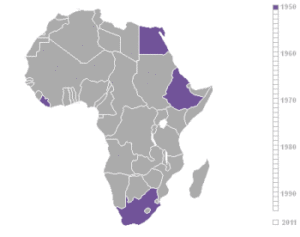UN Document Source Posted 22 Oct 2024 Originally published 24 Sep 2024Origin View original
I. Introduction
1. The present report is prepared pursuant to the presidential statement dated 26 October 2010 (S/PRST/2010/22), in which the Security Council requested annual reports on the implementation of resolution 1325 (2000); resolution 2122 (2013), in which the Council called for updates on progress across all areas of the women and peace and security agenda, highlighting gaps and challenges; and resolution 2493 (2019), in which the Council called for reinforced measures to fully implement the agenda. This report tracks trends across conflict-affected countries1 and follows up on the Secretary-General’s directives to the United Nations and on the five goals for the decade articulated in the reports on women, peace and security from 2019 and 2020, especially the goal on financing for the women and peace and security agenda. The report is informed by data and analysis provided by entities of the United Nations system, including peacekeeping operations, special political missions and country teams, inputs from Member States, regional organizations and civil society, and analysis from other globally recognized data sources.
2. The data and findings in the present report paint a stark picture. Amid record levels of armed conflict and violence, progress made over decades is vanishing before our eyes. Generational gains in women’s rights hang in the balance around the world, undercutting the transformative potential of women’s leadership and inclusion in the pursuit of peace.
3. The global community has repeatedly committed to ensuring women’s participation in conflict prevention, resolution and recovery, and to upholding their rights during war. However, in recent years, the annual reports of the SecretaryGeneral on women and peace and security have warned of stagnation and regression across key indicators on women and peace and security. One key factor undermining progress is the escalating backlash against women’s rights and gender equality. Women’s human rights defenders and civil society organizations on the frontlines of crises are too often under attack themselves. In 2023, several Governments restricted the use of gender-related terminology that has been universally accepted for decades, with serious consequences for the work of both the United Nations and women-led civil society organizations.2 Restrictions on women’s and girls’ education, freedom of movement and right to work, such as in Afghanistan, Yemen and other contexts, represent blatant human rights violations and abuses that have a severe impact on women’s and girls’ lives. They also create an existential and operational challenge, including for the delivery of humanitarian aid, thereby limiting women and girls from accessing relief.
4. Another set of factors is linked to reduced opportunities to advance the women and peace and security agenda. Increased geopolitical divisions make it difficult to advance comprehensive solutions to conflict. Instead of diplomacy and mediation, including under the auspices of the United Nations or regional organizations, more Governments and non-State armed actors are reverting to military action and arms proliferation. 3 Critical tools used to advance the women and peace and security agenda in its first two decades, including peace negotiations, transitional justice, peacekeeping and special political missions, sanctions, human rights monitoring, and disarmament and demobilization initiatives, have more recently seen reduced levels of support, which has lessened their effectiveness.
5. Finally, power and decision-making on peace and security matters remain overwhelmingly dominated by men, and progress has been disturbingly slow in terms of ending impunity for those who perpetrate atrocities against women and girls. In 2023, the proportion of women killed in armed conflicts doubled compared with the previous year,4 the number of United Nations verified cases of conflict-related sexual violence was 50 per cent higher than the year before, 5 and the number of girls affected by grave violations in situations of armed conflict increased by 35 per cent. 6 And yet, even basic public awareness about these injustices is lacking. A recent study showed that while media coverage about conflict increased more than sixfold between 2013 and 2023, only 5 per cent of the coverage focused on women’s experiences in war, and only 0.04 per cent of articles published about armed conflict in that period mention women’s contribution as leaders.7 The situation of women and girls affected by intersecting forms of discrimination is even more worrisome and requires greater attention.
6. As long as oppressive patriarchal social structures and gender biases hold back half our societies, peace will remain elusive. For that reason, the Secretary-General’s policy brief on A New Agenda for Peace 8 strongly emphasizes the promise of women’s full, equal and meaningful participation in political and public life and at all levels of decision-making on peace and security, grounded in human rights, as our path to a better future.

![You are currently viewing Report of the Secretary-General on women and peace and security (S/2024/671) [EN/AR/RU/ZH]](https://icmglt.org/wp-content/uploads/2024/10/image-46.png)


